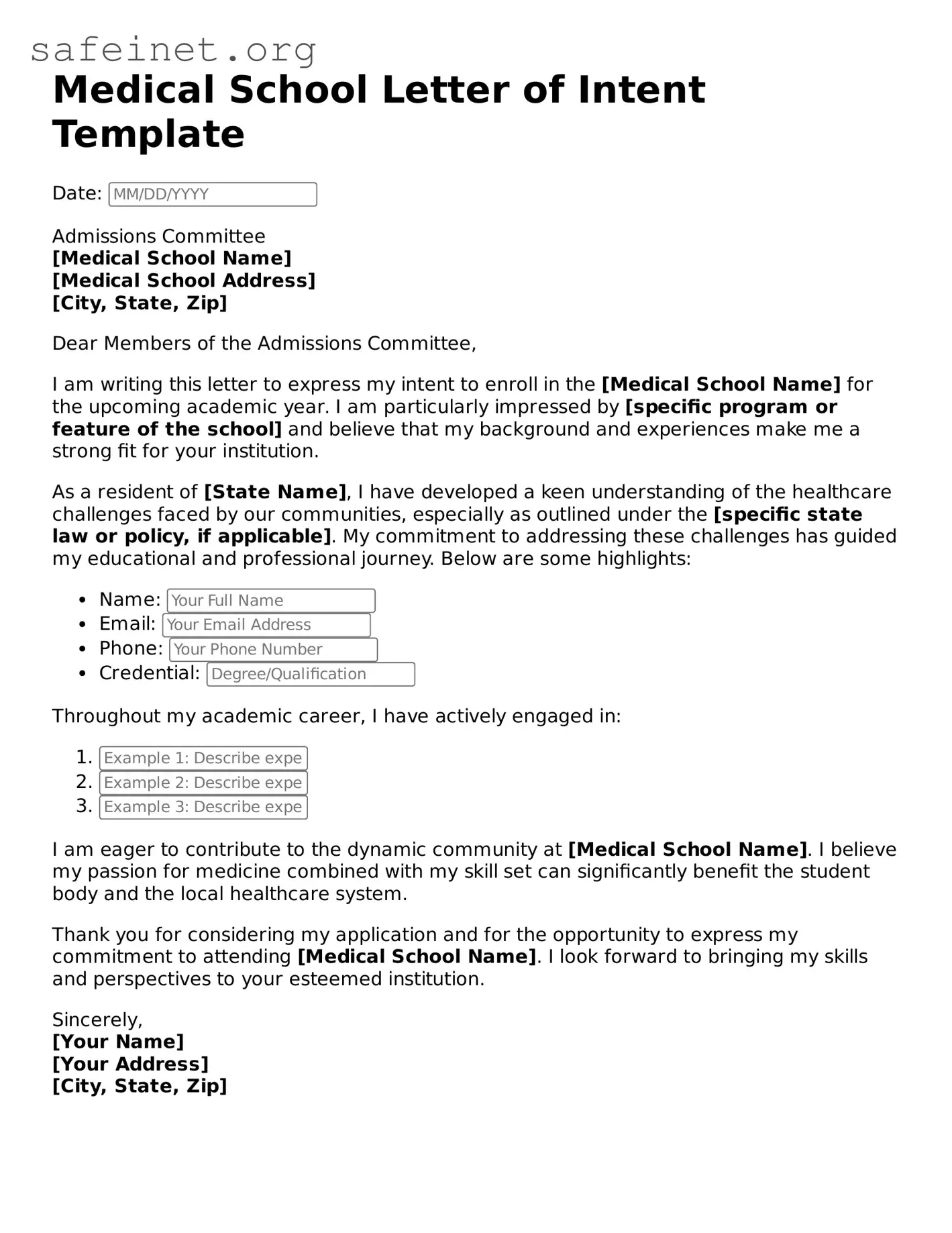What is a Medical School Letter of Intent?
A Medical School Letter of Intent is a formal statement submitted by prospective medical students indicating their strong desire to attend a specific medical school. It serves as a way to express commitment to that school and can positively influence admissions decisions.
When should I send my Letter of Intent?
It's best to send your Letter of Intent shortly after receiving an acceptance offer from another school, but it can also be sent if you are waitlisted. If you are particularly set on a specific medical school, timing is crucial; sending it early or during the interview season might have the most impact.
What should I include in my Letter of Intent?
Your Letter of Intent should include a clear expression of your interest in the medical school, specific reasons why you are passionate about that particular institution, and any additional information that highlights your qualifications. Personal anecdotes and details about how the school aligns with your career goals can enrich your message.
How long should my Letter of Intent be?
Typically, a Letter of Intent should be concise, ideally one page in length. Aim to be clear and impactful. You want to convey your enthusiasm and fit for the school without overwhelming the reader with too much information.
Is it okay to send multiple Letters of Intent to different medical schools?
While you can send Letters of Intent to multiple schools, it’s important to be cautious. You should only express unequivocal interest in one school through a Letter of Intent. This helps maintain sincerity and shows the admissions committee that you are genuinely committed to their institution.
Should I follow up after sending my Letter of Intent?
Yes, following up is a good practice. It shows your continued interest. You might reach out a few weeks after sending your letter to politely inquire about your application status. However, be mindful not to come across as too pushy or impatient.
Can a Letter of Intent improve my chances of acceptance?
A well-articulated Letter of Intent can certainly enhance your chances of acceptance. It demonstrates your enthusiasm and commitment, which are qualities that schools often value. Admissions committees appreciate knowing which candidates are genuinely interested in joining their program.
What tone should I use in my Letter of Intent?
Your tone should be professional, yet personal. Be sincere and passionate while maintaining a level of formality appropriate for a medical school application. A balance of professionalism and warmth can effectively communicate your desire to be a part of the institution.
